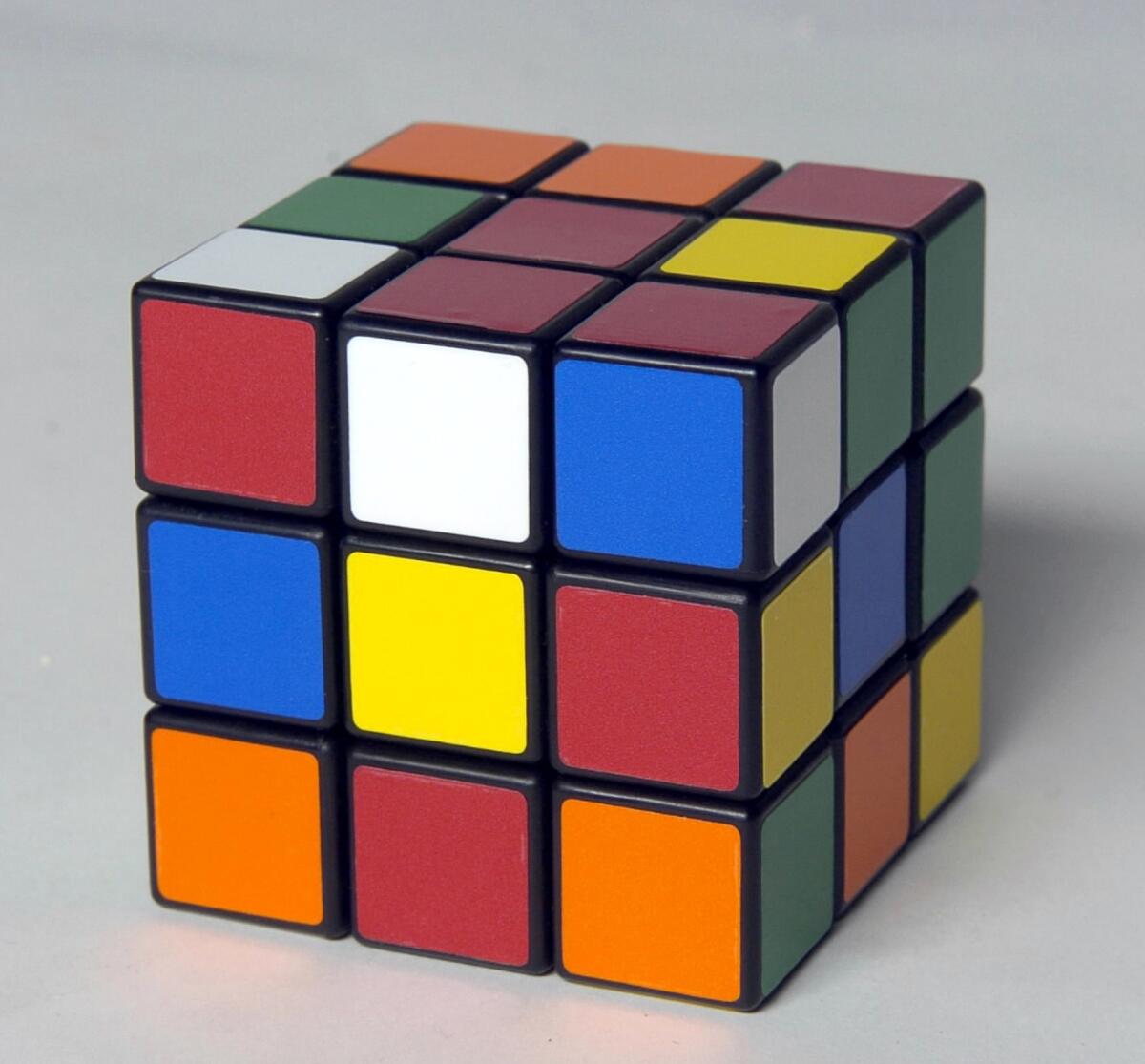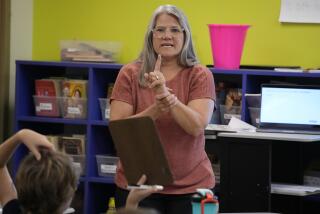How our 1,000-year-old math curriculum cheats America’s kids

- Share via
Imagine you had to take an art class in which you were taught how to paint a fence or a wall, but you were never shown the paintings of the great masters, and you weren’t even told that such paintings existed. Pretty soon you’d be asking, why study art?
That’s absurd, of course, but it’s surprisingly close to the way we teach children mathematics. In elementary and middle school and even into high school, we hide math’s great masterpieces from students’ view. The arithmetic, algebraic equations and geometric proofs we do teach are important, but they are to mathematics what whitewashing a fence is to Picasso — so reductive it’s almost a lie.
Most of us never get to see the real mathematics because our current math curriculum is more than 1,000 years old. For example, the formula for solutions of quadratic equations was in al-Khwarizmi’s book published in 830, and Euclid laid the foundations of Euclidean geometry around 300 BC. If the same time warp were true in physics or biology, we wouldn’t know about the solar system, the atom and DNA. This creates an extraordinary educational gap for our kids, schools and society.
PHOTOS: From the Fed to GM, 5 top-tier women trying to fix man-made messes
If we are to give students the right tools to navigate an increasingly math-driven world, we must teach them early on that mathematics is not just about numbers and how to solve equations but about concepts and ideas.
It’s about things like symmetry groups, which physicists have used to predict subatomic particles — from quarks to the Higgs boson — and describe their interactions. Or Riemannian geometry, which goes far beyond the familiar Euclidean geometry, and which enabled Einstein to realize that the space we inhabit is curved. Or clock arithmetic — in which adding four hours to 10 a.m. does not get you to 14 but to 2 p.m. — which forms the basis of modern cryptography, protects our privacy in the digital world and, as we’ve learned, can be easily abused by the powers that be.
We also need to convey to students that mathematical truths are objective, persistent and timeless. They are not subject to changing authority, fads or fashion. A mathematical statement is either true or false; it’s something we all agree on. To paraphrase William Blake, mathematics “cleanses the doors of perception.”
PHOTOS: How the Democrats can win back the House and keep the Senate -- in 6 steps
What distinguishes us from cavemen is the level of abstraction we can reach. Abstraction enabled humans to move from barter to money, and from gold coins to plastic cards. These days, what’s left of “money” is often just an account record we read on a computer screen, and soon it could just be a line of code in a bitcoin ledger.
Today, abstraction is all around us — and math is the language of abstraction. In the words of the great mathematician Henri Poincare, mathematics is valuable because “in binding together elements long-known but heretofore scattered and appearing unrelated to one another, it suddenly brings order where there reigned apparent chaos.”
For the next generation to operate effectively, they must gain proficiency with abstraction, and that means mathematical knowledge plus conceptual thinking times logical reasoning — all things that a wider view of math would bring to the math classes at our schools.
PHOTOS: Is Gov. Jerry Brown saving California or ruining it? The 9 big issues
I recently visited students in fourth, fifth and sixth grades at a school in New York to talk about the ideas of modern math, ideas they had never heard of before. They were young enough that no one had told them yet that math was impenetrable, that they wouldn’t get it. Their minds were still uncluttered with misconceptions and prejudice. They hadn’t yet been humiliated by poorly trained math teachers for making mistakes in front of their peers. Every question I asked them was met with a forest of hands.
I used a Rubik’s Cube to explain symmetry groups: Every rotation of the cube is a “symmetry,” and these combine into what mathematicians call a group. I saw students’ eyes light up when they realized that when they were solving the puzzle, they were simply discerning the structure of this group.
We next studied the majestic harmony of Platonic solids using dice. And I told the kids about the curved shapes (such as Riemann surfaces) and the three-dimensional sphere that give us glimpses into the fabric of our universe.
These are portals into the magic world of modern math, starting points as surely as addition, subtraction and fractions are starting points. The added bonus is that they give us a perfect antidote to the common perception of the subject as stale and boring.
Of course, we still need to teach students multiplication tables, fractions and Euclidean geometry. But what if we spent just 20% of class time opening students’ eyes to the power and exquisite harmony of modern math? What if we showed them how these fascinating concepts apply to the real world, how the abstract meets the concrete? This would feed their natural curiosity, motivate them to study more and inspire them to engage math beyond the basic requirements — surely a more efficient way to spend class time than mindless memorization in preparation for standardized tests.
In my experience, kids are ready for this. It’s the adults that are hesitant. It’s not their fault — our math education is broken. But we have to take charge and finally break this vicious circle. With help from professional mathematicians, all of us should make an effort to learn something about the true masterpieces of mathematics, to be able to see big-picture math, the way we see art, literature and other sciences. We owe this to the next generations.
If we succeed, we will stop treating this crucial subject as if it were the equivalent of painting a fence, and we will do away with the question, why study math?
Edward Frenkel is a mathematics professor at UC Berkeley and the author of “Love and Math: The Heart of Hidden Reality.”
More to Read
A cure for the common opinion
Get thought-provoking perspectives with our weekly newsletter.
You may occasionally receive promotional content from the Los Angeles Times.









